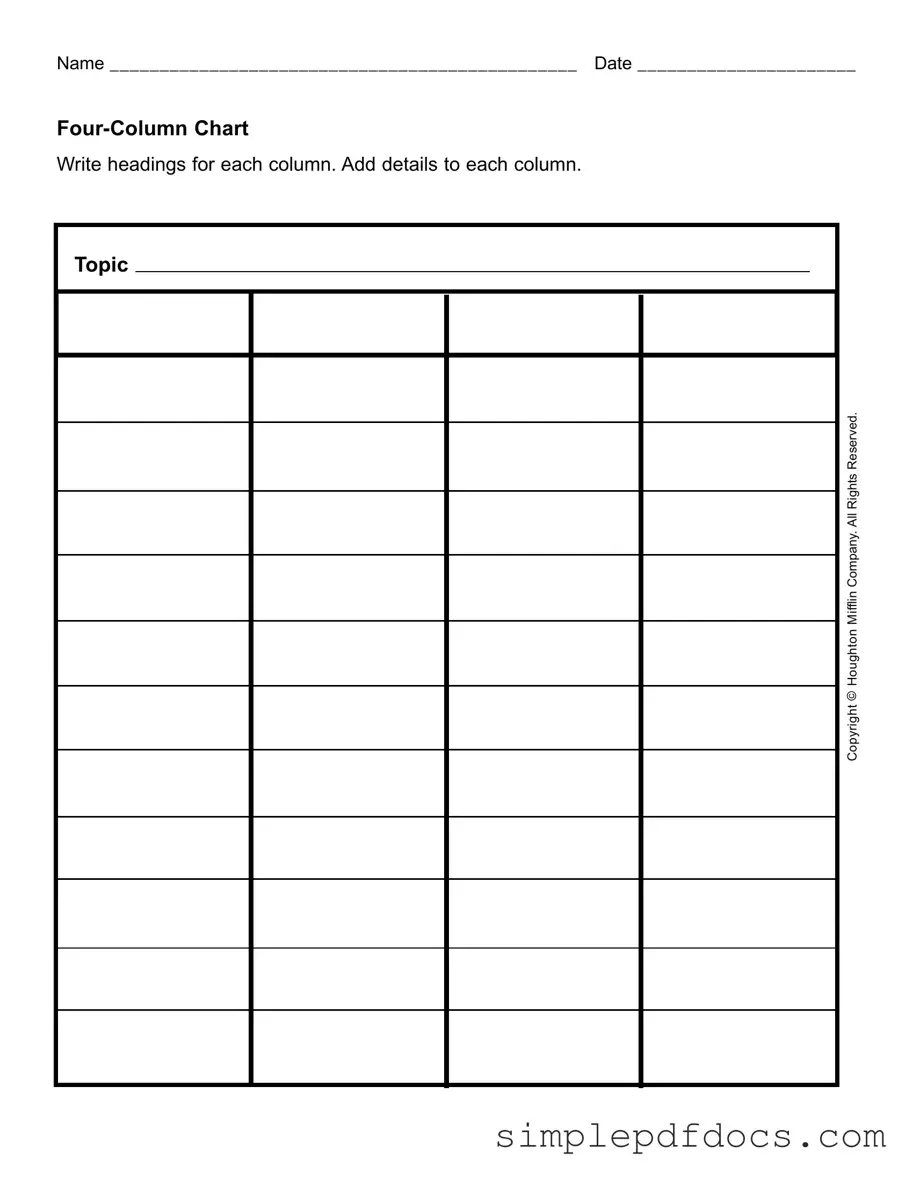The Four Column Chart form serves as a practical tool for organizing information in a clear and structured manner. It allows users to break down complex topics into manageable sections, facilitating easier analysis and comprehension. Typically, the form includes spaces for a title, the date, and four distinct columns, each designated for specific headings. Users can customize these headings to suit their needs, ensuring that the chart effectively captures the essential details of the topic at hand. For instance, when discussing a company like Mifflin, the chart can help outline key aspects such as objectives, strategies, challenges, and outcomes. This organized approach not only enhances clarity but also encourages critical thinking and effective communication. By filling in the relevant details under each heading, individuals can create a comprehensive overview that can be easily referenced and shared.
